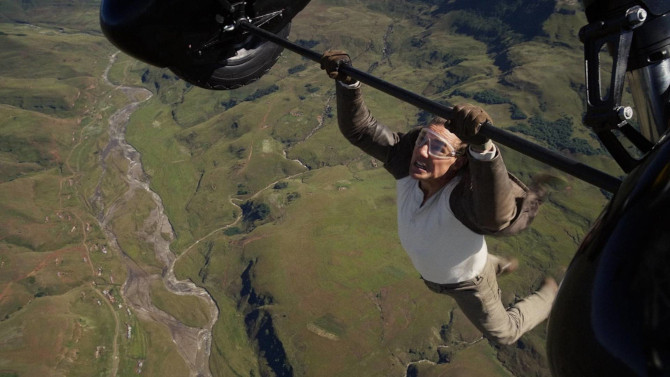
An Impossible Mission
How do you wrap up a franchise like Mission: Impossible? That is, if this even is the final installment... as they’ve made it sound (while at the same time, stars not named ‘Tom Cruise’ pipe up and suggest that might not be so). It has been twenty-nine years, with different writers and visionary directors – from twisty Brian De Palma and the action hair stylings of John Woo, to the lens flares of J.J. Abrams and animation expert Brad Bird, it was only about ten years ago that the franchise decided to opt for The Usual Suspects scribe Christopher McQuarrie for the final four. To return to that opening question once more, you could end with a Sopranos’ style cliffhanger, simply make another entertaining movie like the many before – like Everybody Loves Raymond did it with its final episode, or try to tie everything up in a neat little bow by bringing everything together as the Daniel Craig era did with James Bond. Well, it is definitely more along the lines of the latter example, with some distinct differences.
-
Star Pick with Stephen Harper
 The Enigma that is Man and MachineThe Imitation GameMarch 15, 2016
The Enigma that is Man and MachineThe Imitation GameMarch 15, 2016One of the more critically acclaimed films to come out of 2014 was the World War 2 drama The Imitation Game, which follows Alan Turing, a mathematical prodigy who builds a machine that can break the Enigma – a German device that decodes their secret military messages. Someone who wholeheartedly agreed with the praise this movie received is former Canadian Prime Minister Stephen Harper – who proclaimed that it was easily his favourite film of 2014.
-
Vigilante Justice
 Gran TorinoHarry BrownMarch 1, 2016
Gran TorinoHarry BrownMarch 1, 2016I am excited to announce that a new feature has come to Filmizon.com – the ability to do a Dual/Duel movie review. I can think of no better way of putting the new set-up to the test than comparing one of the best films of 2008 – Clint Eastwood's Gran Torino, to a lesser known, but equally strong picture – 2009's Harry Brown, starring Michael Caine.
-

Bridge Over Troubled Water
Bridge of SpiesFebruary 28, 2016The Cold War was a truly unique, interesting and scary time when the whole world felt upside down – how else can you describe a worldwide conflict where tensions could not be higher yet bullets and bombs were not being fired. Paranoia, fear and propaganda ruled the day as two very different ideologies, brought forth by two powerhouse nations, fought for the hearts and minds of the world’s populace. It is in this intense setting that Steven Spielberg re-teams with Tom Hanks to make the harrowing, fish-out-of-water story Bridge of Spies.
-

Highway to Hell
Mad Max: Fury RoadFebruary 5, 2016It is quite clear that a good story is a vital part of making a quality film. Yet, in certain rare circumstances, the narrative can play a less important role than the majestic visual aspects of storytelling. It can be a risky proposition, and one that rarely works, but when it does, the audience is in for one exciting and mesmerizing ride. This is the case with the Academy Award Best Picture nominee Mad Max: Fury Road.
-

Men are from Mars
The MartianJanuary 29, 2016There are a wide array of interesting and unique motion pictures nominated for this years 88th Academy Awards – from big budget epics to small time period pieces. One that follows the former is the Ridley Scott space saga The Martian.
-

Rag-Tag Team Rocks Through the Galaxy
Guardians of the GalaxyJanuary 8, 2016The anti-hero, who can be described as a vital character that lacks typical heroic qualities, has been a staple of both film and television over the past several years. Actors like Hugh Laurie, who created the iconic game-playing character House and Johnny Depp, who modelled his likeable yet sketchy pirate Jack Sparrow after Keith Richards, are just two examples of the moral ambiguity that comes with many a character nowadays. Perhaps a recent film that best exemplifies this term is when a group of rag-tag criminals come together to save multiple worlds in Marvel’s 2014 space action adventure flick Guardians of the Galaxy.


